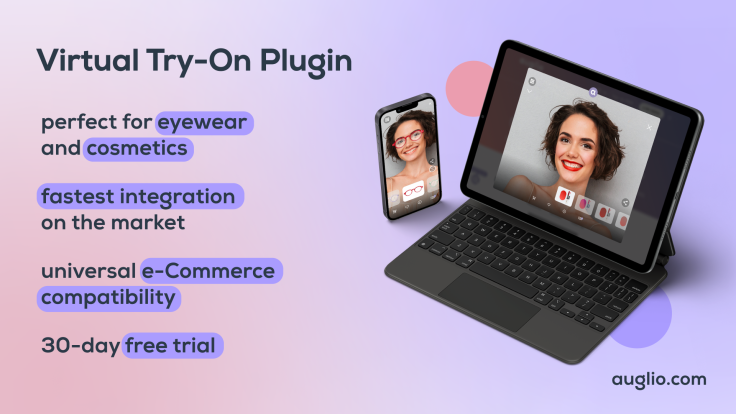Best Augmented Reality Of 2023
At a time when technology consistently transcends the boundaries of human imagination, few innovations have captivated our senses and possibilities, quite like augmented reality (AR). The seamless combination of digital and physical elements has given rise to an immersive experience that further closes the gap between what's real and what's not.
Today, developers have a remarkable opportunity to leverage the power of augmented reality and develop it into a canvas for our benefit and imagination. But how do they bring this creativity to life? Furthermore, how do they deliver complex and dynamic digital realities from static designs? This is where innovative tools come into play.
In plain terms, AR tools foster the design and creation of animations in virtual reality environments. These virtual workspaces create a platform where we can carefully arrange the dynamics of objects, characters and entire landscapes, all while blurring the line between reality and fantasy. We unravel these technological tools, highlighting some of the best options regarding e-commerce in 2023.
Characteristics of Augmented Reality Tools
As more people buy into the transformative properties of augmented reality, several tools exist for creators to develop their virtual, dynamic environment. But how can you identify the best ones? Typically, these tools offer many features that empower creators, designers, developers and businesses to craft immersive and engaging AR experiences. Here are some key features of top-tier AR tools.
Mobile Platform Compatibility
The best AR tools can function across diverse mobile and web environments. This feature offers users a significant advantage by expanding the accessibility scope of the AR experience.
3D Object Tracking
The ability to effectively track and anchor 3D objects within the fabric of real-world environments is crucial in developing immersive AR experiences. As such, top-quality tools track and anchor 3D objects, making them interactive and accurately attuned to the surrounding environment.
Image Recognition
AR tools should facilitate the image recognition process within AR frameworks. This feature typically incorporates interactive marketing campaigns, where consumer engagement is heightened through captivating visual triggers. Education and experiential learning are other use cases of this feature.
Animation and Interactivity
Ideally, AR tools should empower users to infuse life into different elements in the augmented environment. This feature should encompass inanimate objects and dynamic characters, resulting in an immersive experience focused on fluid motion, interactive engagement and a smooth combination of virtual and real-world domains.
Integration with Design Software
Some of the best AR platforms integrate with widely-used design tools to facilitate a seamless transition for designers. By opting for AR tools with this feature, designers can effortlessly transport their creative projects from a familiar design realm into the more dynamic domain of augmented reality.
Customization and Branding
In the context of e-commerce, businesses should be able to tailor AR experiences, ensuring it aligns with the visual characters of their brands. The customization and branding feature of AR tools helps to develop unified and holistic user experiences that leave a lasting impression on customers.
Augmented Commerce Capabilities
Still, in commerce, most AR tools tend to amplify the augmented community landscape by offering immersive and interactive "try-on" encounters for products. This feature resonates with modern consumers' preferences and expectations, significantly improving customer engagement and sales.
Best Augmented Reality Tools in 2023
The evolution of AR tools has continued into 2023, offering several cutting-edge solutions that empower users, creators and businesses to craft interactive and captivating AR experiences. This guide presents a comprehensive list of five of the best augmented reality tools in 2023, each carefully selected for its unique functionalities, features and potential to bring AR to life.

1. Auglio
Auglio emerges as an exceptional augmented e-commerce plugin designed to revolutionize shopping experiences. Its ingenious incorporation as a versatile plugin sets this product apart from its counterparts, making it integral to any e-commerce store.
Auglio features a fascinating array of extensions, each bearing the potential to captivate users with several functionalities. While this product can handle jewelry and fashion accessory stores, it's most optimized for eyewear and cosmetics. This optimization is highlighted with the inclusion of an automatic pupillary distance measurement mechanism.
This plugin also improves upon user experience through its recently introduced concept of "assisted shopping." With this feature, customers can establish a direct and real-time connection with sales personnel and explore virtual try-out experiences through immersive video calls. Across the industry, Auglio is known to push boundaries and develop innovations often copied by other companies.
Virtual try-on has become a significant aspect of e-commerce, with many consumers looking to try things out virtually before buying them online. Therefore, Auglio's virtual try-on feature remains an effective tool for boosting conversion rates by as much as 10%, all within affordable pricing plans.
The Agulio plugin is also compatible and available on different platforms. E-commerce stores dealing with eyewear or cosmetics can try this product for 30 days free. It's also integrable with Shopify with a 14-day trial period. Users can also explore the plugin directly on the LIVE DEMO site without registering.

2. Adobe Aero
The Adobe Aero software provides one of the most intuitive ways to create, share and view augmented reality experiences. Adobe Aero provides an easy platform to build AR scenes using 2D and 3D assets without significant coding skills. With this software, you can add animations and behaviors, preview designs and publish AR creations on different platforms, including iOS, Windows and desktop.
Adobe Aero integrates seamlessly with other Adobe design packages like Photoshop, Illustrator and Dimension, alongside third-party applications and asset libraries. With Aero, you can explore several AR assets, which helps in real-time visualization. And better, users can explore these features for free.

3. Tvori
Tvori is a design and collaboration platform allowing designers and businesses to prototype interfaces, products and experiences for virtual and augmented reality without any experience with codes or game engines. With Tvori, users can develop 3D scenes, animations, interactions and sounds, using pre-programmed or imported assets. Once done, you can export your work in different formats, including videos, photos, 3D models and VR experiences, depending on your preference.
Tvori is one of the best virtual creation tools today and remains a prevalent option for professionals and hobbyists in creating immersive UI designs. It extends beyond its primary function, finding utility in diverse industries such as education, architecture, gaming, marketing and entertainment. This platform is available on Steam as early access software for Oculus Rift and HTC Vive headsets.

4. Masterpiece Studio Pro
Masterpiece Studio Pro is a comprehensive VR 3D creative suite perfectly designed to address the needs of independent creators seeking to create immersive 3D content. With this tool, designers can quickly generate, refine and deploy 3D models with the remarkable capabilities of generative artificial intelligence.
Masterpiece Studio Pro can help create concept art, full-body avatars, characters, animations and environments in a VR or AR realm. It also integrates with other design tools, allowing developers to easily export creations to different game engines, renderers and animation software platforms. With Masterpiece Studio, creating 3D designs becomes fun and effortless.

5. Vuforia Engine
Vuforia Engine is a software development toolkit for creating AR applications. This SDK offers advanced technology needed to build engaging 3D product demonstrations, interactive brand campaigns and applications where customers can explore personalized products.
One key feature of this tool is its advanced computer vision capable of recognizing objects, images and spaces and interacting with them realistically. Vuforia supports several platforms, including Android, iOS, UWP and Magic Leap 2. It also offers easy integration with Unity, ensuring game developers can export their creations into one of the most popular game engine and development environments.
Vuforia Engine features an extensive community of active developers that provide support and resources for other users. If you wish to use this tool, you can always explore its flexible licensing model that suits different needs and budgets.
Conclusion
With each passing year, we witness a trend where technology and creativity combine to shape our experiences. The list of cutting-edge AR tools pinpoints the remarkable strides in the field of immersive technology, empowering businesses and developers to leverage the innovative potential of AR.
As AR technology continues to evolve, it holds the potential to reshape different industries, from entertainment to education, marketing and health care. But for now, these tools would serve as the compass guiding us toward a time where the line between reality and imagination is further blurred.





















